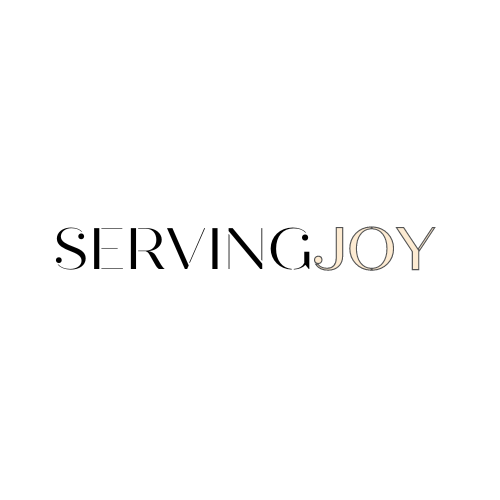Commitment in romantic relationships has always been a concept wrapped in layers of societal expectations and personal aspirations. As we move through the corridors of time, the essence of what it means to be committed has seen a shift, reflecting changes in societal norms, personal values, and the very fabric of relationships. This conversation aims to shed light on how modern dynamics have redefined commitment, moving away from traditional milestones to a more nuanced understanding that resonates with today’s diverse relationship landscapes.
The Evolution of Commitment in Modern Relationships
Commitment in romantic relationships has historically been closely tied to the institution of marriage. Couples entered into partnerships with clear societal roles and expectations, with marriage acting as a definitive signal of a couple's long-term intent.
The rise of cohabitation has shifted this landscape. Many couples now opt to live together without the formal label of marriage, testing compatibility before making a legal commitment. This change reflects a broader trend toward valuing personal fulfillment over traditional milestones.
Changing marriage rates add another layer to our understanding of modern commitment. With more individuals delaying marriage or forgoing it altogether, the emphasis has shifted from legal bonds to the quality of the connection between partners.
The freedom to define relationships outside traditional frameworks allows for more diverse expressions of commitment. Whether labeled as partners, significant others, or simply as a couple, what defines commitment is the mutual decision to be together in a manner that best suits those involved.
Commitment has become more individualized. Couples nowadays discuss and negotiate the terms of their commitment, with open communication about expectations, desires, and future plans taking center stage.
Social media and digital communication have transformed relationship dynamics, offering new platforms for expressing commitment but also introducing challenges such as online affairs or the online portrayal of a relationship, which can influence partners' perceptions and feelings of security.
Economic factors contribute to the evolving view of commitment as well. Financial stability is often considered before entering into marriage, reflecting a pragmatic approach where love intertwines with practicality.
The role of children in a committed relationship has taken on new dimensions. With some couples choosing cohabitation or delayed marriage, discussions about parenting and family structure have become integral parts of the commitment conversation.
Community and societal acceptance play significant roles in how relationships are seen and experienced. As more diverse relationship structures gain visibility and acceptance, people feel empowered to pursue commitment in a way that reflects their true selves.
The journey towards self-fulfillment and personal growth has become intertwined with how commitment is viewed. Relationships are increasingly seen as partnerships in mutual growth, where commitment is about supporting one another's individual journeys as well as the journey together.
In the context of these changes, commitment in modern relationships is less about conforming to traditional standards and more about creating a shared understanding between partners that honors their unique connection and the world they navigate together.

The Role of Communication in Fostering Commitment
Open and honest communication serves as the lifeline in the ecosystem of a committed relationship. It plays an imperative role not just in the initiation but in the continuous evolution of commitment between partners. Without it, the relationship risks withering in the shadows of misunderstandings and unmet expectations.
Communication acts as the bridge that connects two separate worlds. Each partner enters a relationship armed with their personal histories, beliefs, and expectations. Open dialogues help translate these individual narratives into a shared story, converging paths towards a united future. Conversing about hopes, dreams, and fears acquaints each partner with the other's internal landscape, fostering deeper understanding and empathy that reinforce relational bonds.
Effective communication involves navigating through tough conversations with honesty and vulnerability. Talking through disputes or disagreements without armor encourages resolution over resentment. When partners feel safe enough to express their true feelings, it mitigates conflicts and prevents the build-up of emotional debris that can obstruct the flow of commitment.
Aligning expectations through communication is akin to drawing a map for the journey ahead. By discussing what commitment means to each partner – be it fidelity, long-term plans, or navigating financial decisions – couples solidify their understanding and respect for each other's boundaries and desires. This alignment reduces the potential for misunderstanding and actively constructs paths that both are willing to walk together.
Communicating desires for personal growth and how it fits into the fabric of the relationship molds commitment to be flexible and accommodating. As individuals evolve, so do relationships. Acknowledging that change is part of the commitment, and discussing how each partner's growth aspirations can be supported, crafts an environment where the relationship itself can evolve and deepen without leaving anyone behind.
Navigating through life's challenges together, discussing them openly and sincerely, fortifies the faith partners place in each other and the relationship. Facing obstacles and emerging on the other side, as a united front, exemplifies the very essence of commitment. It reinforces the dedication towards not just weathering storms together but also in seeking sunlight on the other side.
In an age where digital communication augments face-to-face interactions, harnessing these platforms to maintain connectivity and express appreciation reminds partners of their bond even in absence. Messages or gestures of affection during the day serve as soft brush strokes on the larger canvas of a committed relationship, adding vibrancy and depth over time.
Recognizing the value of clarity in communication reshapes narratives surrounding commitment. It's a catalyst for transforming "you" and "I" into a harmonious "us". Dialogues rooted in honesty and openness don't merely support the scaffolding of commitment; they breathe life into it every day, ensuring that as partners grow individually, their commitment matures alongside, robust yet adaptable.
This dedicated flow of open communication channels in a relationship doesn't just maintain commitment; it embeds it into the very core of the partnership, laying down a foundation strong enough to support a lifetime of shared experiences.

Understanding and Overcoming Commitment Phobia
Commitment phobia often stems from deep-seated fears and insecurities originating in childhood experiences. Trust issues might develop from parental divorce or witnessing unstable relationships, leading to anxiety around replicating these patterns. Fear of making the wrong choice or worry about losing one's autonomy can also contribute significantly to commitment reluctance.
Understanding the signs of commitment phobia is crucial, including:
- Avoiding long-term plans
- Expressing negative views on committed relationships
- Exhibiting a pattern of short, uncommitted relationships
Recognizing these signs opens a path toward addressing the underlying fears.
Overcoming commitment phobia starts with introspection; identifying past experiences shaping these fears helps individuals understand their reluctance's roots. Acknowledging that these fears stem from past, not current, relationships is key, allowing a separation of past hurts from present possibilities.
Setting aside time for self-reflection is beneficial. Journaling thoughts and feelings about commitment can clarify underlying fears. This self-awareness process aids in personifying fears, making them more manageable to confront and address directly.
Professional help can play a significant role. Therapy provides a safe space to explore childhood experiences and their impact on current relationship views. Therapists equipped with techniques like Cognitive Behavioral Therapy (CBT) can help change negative thought patterns about commitment into more positive ones, building confidence in one's ability to sustain a committed relationship.[1]
Starting small helps in normalizing commitment. Taking committed steps in various life areas can gradually reduce the anxiety surrounding larger commitments, helping individuals realize they can maintain their identity and freedom even within committed scenarios.
Communicating fears with a potential or current partner can significantly alleviate the pressure around commitment. Starting conversations about fears and expectations shines a light on mutual desires and understanding, fostering a relationship built on trust and communication—it's okay to articulate worries about losing independence or fear of repetition of past relationship mistakes.
Embracing flexibility allows individuals to see commitment not as a loss but as an addition to their lives—a perspective shift where commitment represents growth and shared evolution rather than confinement. Commitment should enhance individual identity, not detract from it.
Commitment phobia isn't overcome in a day. It's a process requiring patience, introspection, and an open heart. With the right tools and understanding, individuals can navigate past their fears towards fulfilling and committed relationships. Averting the focus from past anxieties to potential future together lays a solid foundation for emotional connectivity and bond depth, transforming fears into milestones of shared happiness and contentment.

The Impact of Social Media on Relationship Commitment
Social media platforms have transformed the landscape of romantic commitments, subtly weaving into the fabric of how couples signify and interpret their relationship status. The ubiquitous "In a Relationship" status on Facebook, for example, has transitioned from a simple declaration to a statement loaded with implications and expectations. When a relationship status changes, it's broadcasted instantly to a wide audience, sometimes making the relationship more 'official' in the digital realm than in real interactions.
Instagram and Snapchat stories are flooded with snapshots of moments couples share, inadvertently setting benchmarks for what commitment 'looks' like. This portrayal often leans towards perfection—weekend getaways, elaborately celebrated anniversaries, and carefully curated couple selfies—that can distort perceptions of what everyday commitment entails. There's a subtle pressure to match this visual narrative, potentially overshadowing the deeper, less photogenic aspects of commitment like compromise, resilience, and mundane but meaningful gestures of love.
Social media's role as a digital gathering space amplifies the influence of peer opinions on a couple's commitment understanding. Seeing peers engage in certain relationship milestones—moving in together, exotic vacations, engagement announcements—can trigger comparisons, fast-tracking decisions or doubts about one's own relationship trajectory. It's as if the relationship isn't just between two people but is subject to the court of public opinion.
Social platforms also democratize personal narratives, enabling couples in non-traditional relationships to share their versions of commitment. This diversification helps normalize varying commitment expressions beyond mainstream portrayals. Same-sex couples, polyamorous groups, or those choosing long-term cohabitation without marriage now have forums to share their stories, expanding societal definitions of commitment.
Social media extends support networks beyond physical confines, crucial for those seeking guidance or acceptance. Online communities celebrate love in myriad forms, offering solace and solidarity to individuals navigating stigma or lack of acceptance in their immediate environments. Couples separated by distance use platforms not just to communicate but to maintain the emotional closeness integral to commitment—sharing everyday musings via Tweets, routine updates through Facebook posts, or endearments through comments.
These digital interactions introduce opportunities for misinterpretation, with likes, comments, or the lack thereof becoming sources of anxiety. The transparency and accessibility that make social media compelling can also blur boundaries. Instances of jealousy erupt from interactions with others online or disagreements over what's shared publicly, challenging couples to find mutual understanding on navigating their online personas while honoring their commitments.
The paradox of choice presented through direct messages or dating apps adds another layer, potentially undermining commitment with the illusion of endless alternatives. This easy access to prospective romantic or sexual partners can prompt a wanderlust mindset, fostering dissatisfaction and encouraging detachment from current commitments.
Social media holds a dual capability—to both challenge and cherish the essence of romantic commitment in the digital age. It necessitates a conscious negotiation between partners on how they navigate their digital footprint, aware of its impact offscreen. By leveraging its positive aspects for connection and visibility while navigating its pitfalls with open communication, couples can fortify their bonds in this era of interconnectedness.

Commitment and Personal Growth: Navigating Individual and Shared Paths
Harmonizing personal ambitions with a joint future is like walking a tightrope. Partners try their best not to tilt too much one way, fearing the plunge into neglecting personal growth or, the other way, risking the solidity of the relationship they treasure. The first step in balancing this act is acknowledging that individual growth and relationship growth are not opposing forces but complementary ones, painting a richer tapestry of mutual advancement and understanding.
Imagine two climbers tethered together, ascending a mountain. Each step up the mountain represents personal growth, and the rope that binds them symbolizes their commitment to a shared future. For them to reach new heights without pulling each other down, they must:
- Communicate effectively
- Support each individual's pace
- Move in harmony towards the summit
Though their individual reasons for the climb may differ, their goal is unified: reaching the top together. In relationships, this translates to couples supporting each other's personal goals while ensuring these pursuits enrich rather than jeopardize their committed future.
Setting clear, mutual goals is like charting the climb before taking the first step. These goals provide a roadmap, aligning individual ambitions with shared visions, ensuring both partners are climbing the same mountain. How? Through regular check-ins where each partner discusses what they aim to achieve personally and as a couple. Are career advancements on the horizon? Is pursuing a hobby or further education part of the plan? How do these personal endeavors fit into their shared life goals? These discussions help avoid misunderstandings and lay down stepping stones for growth that don't disrupt, but rather fortify, their bond.
It's also about creating a space where dreams and doubts can coexist openly. This space is built on the trust that one can share their deepest fears and highest aspirations without judgment. It's where both partners can express when they feel the rope pulling too tight or too slack, signaling when one's personal journey is outpacing the other or when the relationship's needs are being overshadowed by individual pursuits. Recognizing these signals early on prevents resentment from seeping in, maintaining the equilibrium between personal growth and common objectives.
Practicing independence within interdependence is equally crucial. This dance is intricate. It involves knowing when to take the lead and when to follow, when to step in close and when to give space. Imagine it as a duet where each partner takes turns in the spotlight; the harmony lies not in performing the same steps but in choreographing a routine that highlights each dancer's strengths while celebrating their unity. In the realms of love and commitment, it translates to understanding that personal achievements are not solely individual victories but milestones that enrich the partnership.
Embrace change as the only constant. The persons who entered the relationship are not going to be the same after several years, and that's a good thing. Growth implies change. As both partners evolve, so will their relationship. Instead of resisting this evolution, successful couples find ways to adapt and grow together. Perhaps the mountain they started climbing turns out to be a range of peaks, each offering a new adventure, new challenges, and more opportunities for growth—both personally and together.
Balancing personal growth with commitment to a shared future is an ongoing process of dialogue, support, and mutual celebration of achievements—it's about climbing mountains hand in hand, knowing that every summit conquered together leads to a vista more breathtaking than the last.

In conclusion, the heart of commitment in today’s relationships lies not in adhering to age-old standards but in forging a path that respects and reflects the individual journeys of those involved. It’s about creating a shared narrative that values open communication, mutual growth, and the freedom to define what commitment means on a personal level. As we navigate through the complexities of modern love, remembering this core principle can guide us toward deeper, more meaningful connections.
- Beck AT, Rush AJ, Shaw BF, Emery G. Cognitive Therapy of Depression. New York, NY: Guilford Press; 1979.







